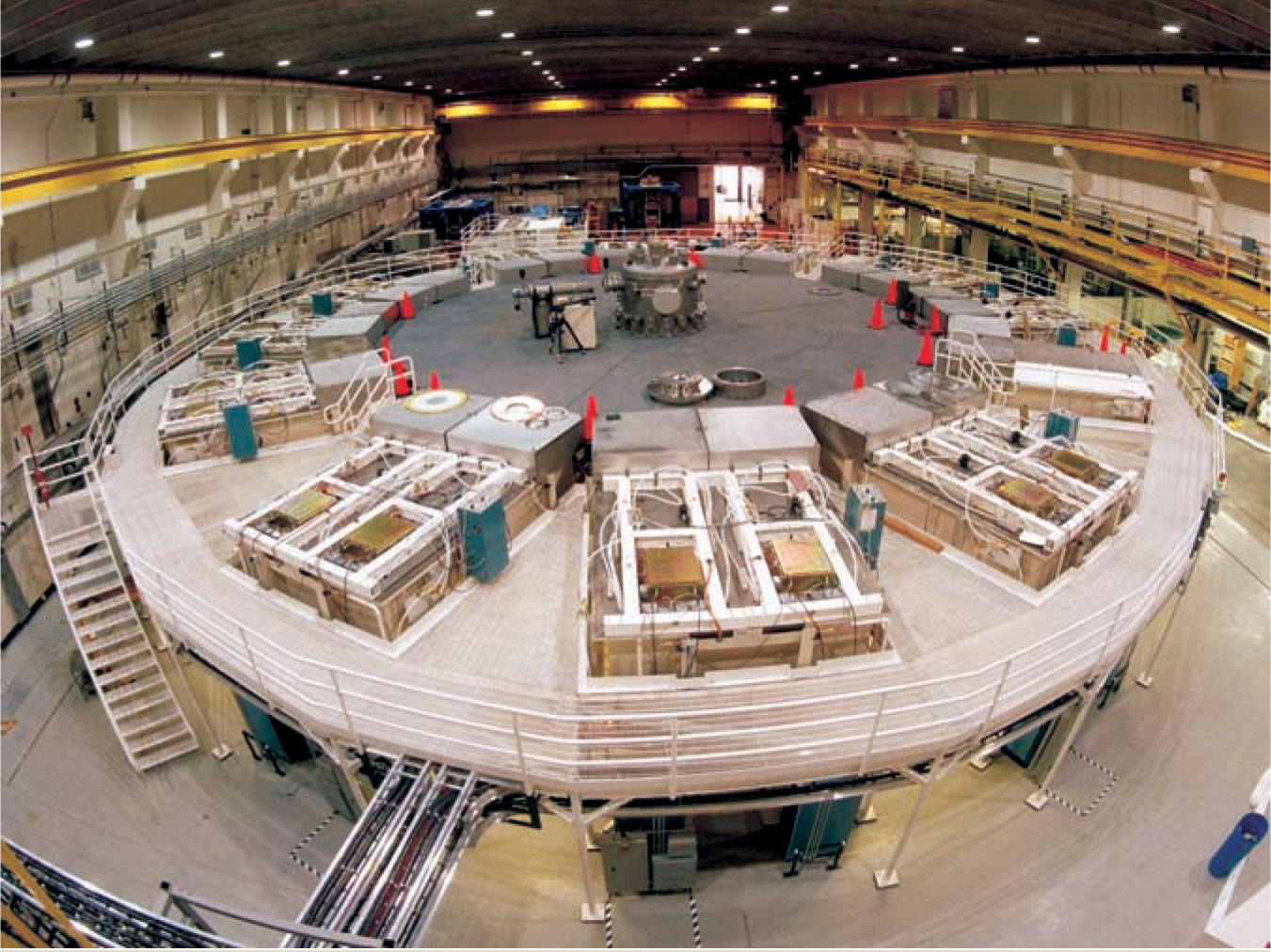Atlas shrugged off at Nevada test site
DOI: 10.1063/1.2218544
After spending more than $100 million on Atlas, the US Department of Energy (DOE) pulled the plug on 1 June, sacrificing the barely used pulsed-power machine, which studied nonnuclear materials at high pressure, temperature, and magnetic field, in favor of subcritical experiments, which use plutonium but stay clear of nuclear-explosion-causing chain reactions.
Atlas, which symmetrically implodes cylindrical targets, was built at Los Alamos National Laboratory (LANL) in New Mexico and was used there in 2001–02 before being moved to the Nevada Test Site (NTS; see Physics Today, July 2001, page 28
The expected lifetime of the machine is 1000 experiments, but it’s been used for only a couple dozen, says LANL Atlas project director Robert Reinovsky. Since reopening at NTS, he adds, Atlas has focused on three series of experiments. They involve hydrodynamic mixing, material damage, and high-velocity friction between two surfaces sliding past each other. The results, Reinovsky says, “are provocative.” The friction experiments, he adds, “can only be done at Atlas.”
The machine is being mothballed because of a shrinking budget, says Mary Hockaday, LANL’s acting program director for experimental physics. Atlas provides excellent data, but it’s not the top priority, she says. “It becomes the first to go when you don’t have money to get what you need.” What’s needed first for stockpile stewardship, DOE’s program for maintaining nuclear weapons without testing, is plutonium data, Hockaday says. If Atlas becomes a priority again, she adds, it could be restarted.
Running Atlas costs around $7 million a year, plus $250 000 to $300 000 per experiment. Hockaday grants that the amount of money being transferred to subcritical experiments is small, but she says, “the biggest issue is that we cannot afford to support Atlas the way it was planned because the overall stockpile stewardship program was not funded as planned.”
In addition to wasting taxpayers’ money and aborting an experimental program, shutting Atlas damages US–Russian cooperation, says Irv Lindemuth, who, before he retired from LANL in 2003, was a project leader for pulsed-power science and helped handle collaborations with Russia’s nuclear design labs. “We are looking at other venues for the collaboration to continue,” says Hockaday. But Lindemuth says that “Atlas is one of the few US facilities of interest to the Russians that they can actually have access to. They are interested in NIF [the National Ignition Facility at Lawrence Livermore National Laboratory], but DOE is not likely to give them access.” In the long term, he says, the question “is whether or not the US will provide the unclassified help Russia says it needs to maintain its nuclear stockpile in an era without testing.” If not, he adds, “how can we expect Russia to provide help on nuclear issues of most importance to the US—control of Russia’s nuclear materials?”

Unplugged: The Atlas pulsed-power machine, now located at the Nevada Test Site.
LANL—IM DIVISION

More about the Authors
Toni Feder. American Center for Physics, One Physics Ellipse, College Park, Maryland 20740-3842, US . tfeder@aip.org
